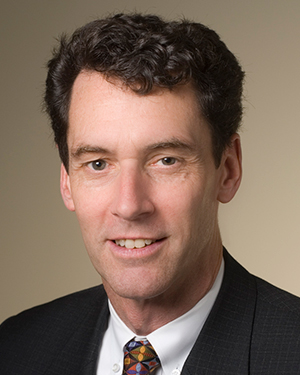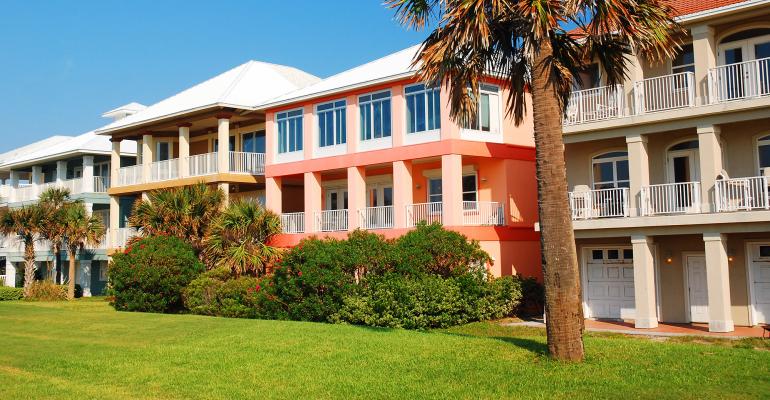As apartment rents in the U.S. continue to show strong growth, even more foreign capital is flowing into the multifamily sector. Many foreign investors are betting the rents will just keep rising—in March, average rents grew by 14.8 percent year-over-year, according to data firm Yardi Matrix.
"The apartment industry has done very well—the news is very good,” says Paul Doocy, co-head of CP Capital, a real estate investment manager specializing in the multifamily sector. "There has been a growing appetite to invest in apartments compared to office and retail. They are shifting resources towards apartments."
For more than 30 years, Doocy’s company has invested equity in U.S. apartment developments on behalf of international investors, including several wealthy German families.
WMRE recently caught up with Doocy to discuss why foreign investors so consistently put their money into U.S. apartment development and what their plans might be for the future.
This Q&A has been edited for length, style and clarity.
WMRE: What makes apartment development so attractive?
 Paul Doocy: We can show—30 years ago and today still—we can show someone from Europe that there is population growth and household growth in the U.S. That same graph doesn't look as good for Europe. In Asia it is even worse. So just household growth and demand growth—they understand that driver.
Paul Doocy: We can show—30 years ago and today still—we can show someone from Europe that there is population growth and household growth in the U.S. That same graph doesn't look as good for Europe. In Asia it is even worse. So just household growth and demand growth—they understand that driver.
The firm that I am with started back in 1989 and had a few different names, but it's really been the same people and strategy. I joined in 1994. The first investments were in apartments. We are raising capital, mainly from private German wealth and family offices, into a fund and applying that to apartment investments in the U.S., teaming up with developers right at the start of construction. Then we will sell it after it is stabilized.
Another thing that is interesting about it is value creation. You are starting with a piece of dirt and building something, leasing it up and selling it. Our investors have liked that particular notion.
WMRE: It seems like over the years, the growth in your pool has been almost [through social contacts], as your investors talk with each other and with other potential investors?
Paul Doocy: They introduced other families to the opportunity to invest in U.S. real estate. It’s a network. These families talk to each other.
WMRE: What kind of yields do they want to achieve?
Paul Doocy: People are trying [for] mid-teens in returns. They may own an office building in Germany. But they are going into the U.S. They have bought a higher return. And they are willing to take a higher risk.
WMRE: What do you have under construction now?
Paul Doocy: Our focus would be to be doing suburban, garden-style, preferably surface-parked projects. They will be a little lower cost basis than something that has structured parking. It is going to be brand new and nice, but at a lower cost basis. Right now, if we have a dozen projects, we might have two or three that are the wrap or podium-style developments.
We had projects in the past that were high-rise. Maybe 20 stories. But not right now. Part of that is that we try and deploy the money quickly. Our investors like the life cycle of getting it built, getting it leased, getting it sold and seeing a return on the investment. For any one investment the average life might be closer to four years.
And a lot of it, not surprisingly, is in the growth markets in the Southeast, on the West Coast, suburban L.A., not so much more urban L.A., the same thing in Seattle. And then on the East Coast, suburban Boston has been a place where we have been active for many years.
WMRE: Did your investors read these stories in the press about people running away from big cities? And is that part of your persistence in building in the Southeastern suburbs?
Paul Doocy: No. I think if you want to be diversified it would not make sense to be involved in a big high-rise project where it took $60 million or $70 million or $80 million of equity. We are more likely to try to do things where it takes maybe $20 million to $40 million of equity. Fifteen years ago that was $10 million of equity. All the projects cost more now.
And we believe in the suburbs. In terms the NYMBYism, there are plenty of great suburban towns where they don’t want apartments and there're plenty of people that fight against them. So, if you are able to get something done in one of these towns, you may be the last one to get anything done for a year or two.
WMRE: Tell us about your latest fund.
Paul Doocy: We have closed the last deal in our most recent fund. It was about $270 million. We closed fundraising in 2020. We have done over 30 funds. About 25 or 26 of them have been exactly this same strategy.
WMRE: How did you structure these investments?
Paul Doocy: Our equity contribution tends to be less than $25 million, ranging from $18 million to $40 million. The overall development cost might be $60 to $100 million. The financing tends to be more conservative now certainly than it was. Most of these loans now cover closer to 65 percent or 60 percent of cost and some even lower, at 55 percent of cost. We are going to be the majority of the equity, maybe 90 percent of the equity will be from us and the developer will put in the rest.
WMRE: How is that changing?
Paul Doocy: The average check size—our equity contribution—is closer to $30 million for each project. There is no question that the overall cost is higher to build these projects and the leverage is maybe less.
WMRE: Did the coronavirus change the kind of things you’re building with this fund?
Paul Doocy: Not really, I think we've stayed focused on garden-style apartment projects with the developers who we've done a lot of business with.
WMRE: Has anything changed in the fight you have to wage to buy a site? It feels like all the developers I speak with are now choosing the same markets.
Paul Doocy: It's more competitive. Land sellers know that their land is in demand. In some suburbs, there may only be a couple of sites where you have any chance of building apartments. So, there's a scarcity. The land seller may have more stringent terms. They want you to close.





